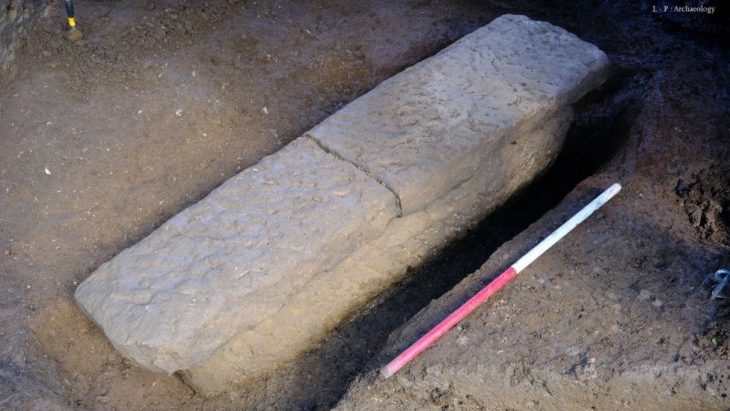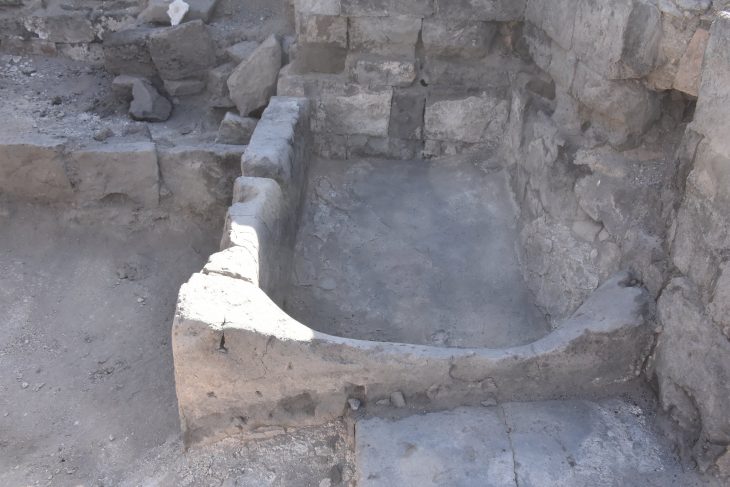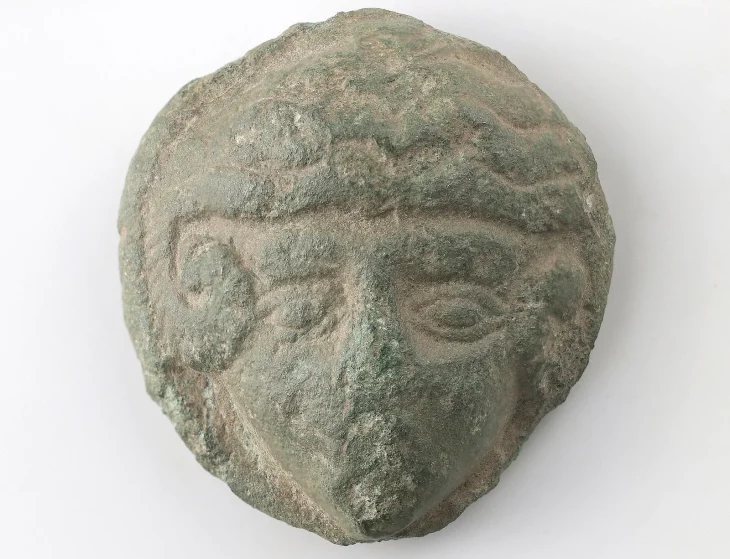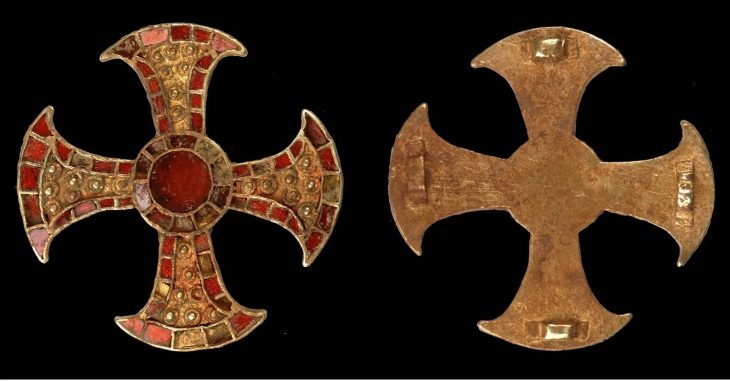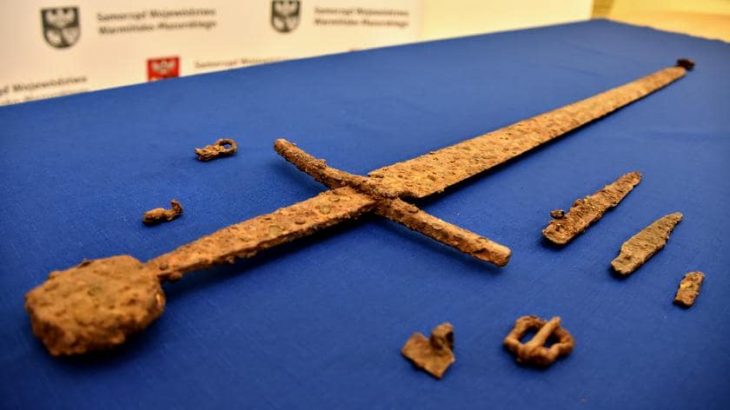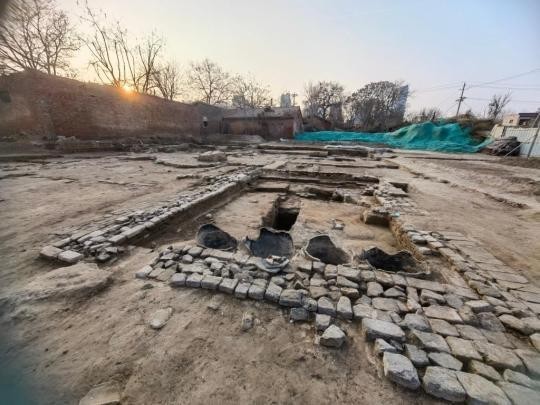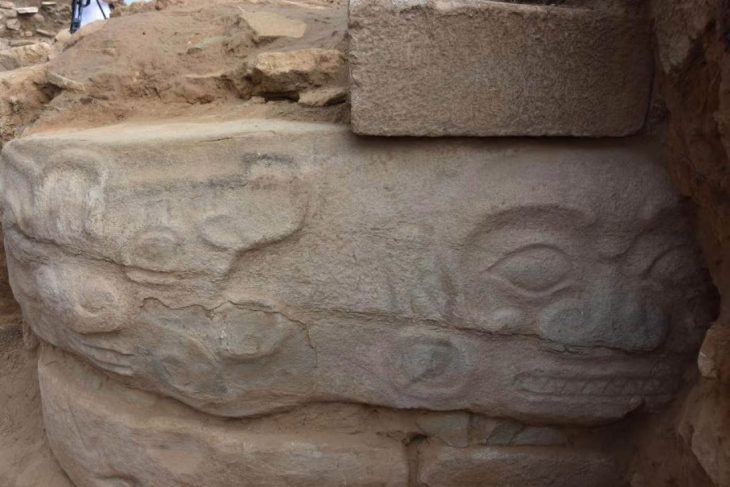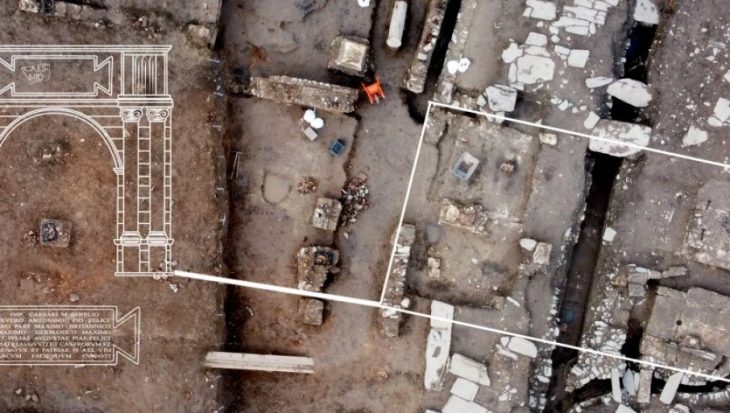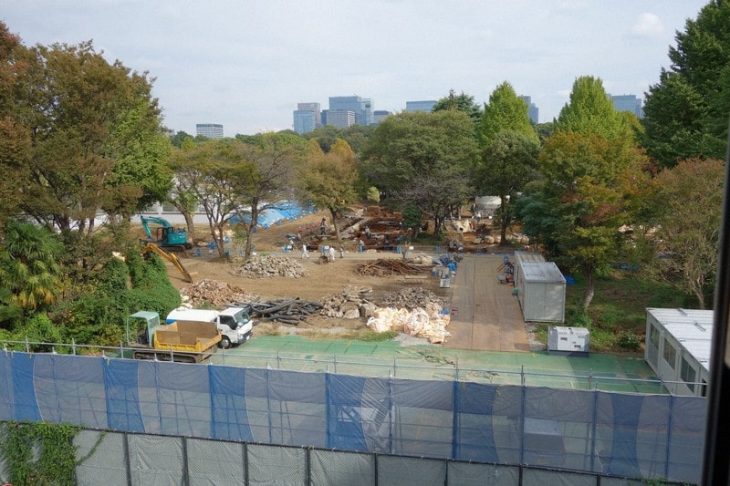An exciting archaeological discovery was made during construction work in Aachen’s city center, Germany. At the corner of Pontstrasse and Marktplatz, archaeologists found an ancient Roman defensive wall from the 3rd century.
As part of a construction project, archaeologists were excavating a street close to the historic city center when they discovered a wall that had collapsed, according to city officials. The wall was immediately recognized as an ancient Roman construction.
Everyone knows that Aachen, the adopted home of Charlemagne, is steeped in history. Nevertheless, there are always discoveries that cause great excitement among archaeologists. This was the case during construction work on the corner of Pontstraße and Marktplatz.
“Remains of a massive Roman wall were found here, which due to its course can be considered a gate part of a large fortification,” archaeologist Andreas Schaub said in a March 19 news release from the city.
“This complex has surrounded the entire Aachen Marktplatz (Market Square) since the beginning of the 3rd century, with a foundation of a wall over five meters wide and round towers. Until now we had no concrete clues as to where gates are located and now with this find we have “For the first time there is evidence that there was a very impressive gateway to the north in today’s Pontstrasse.”
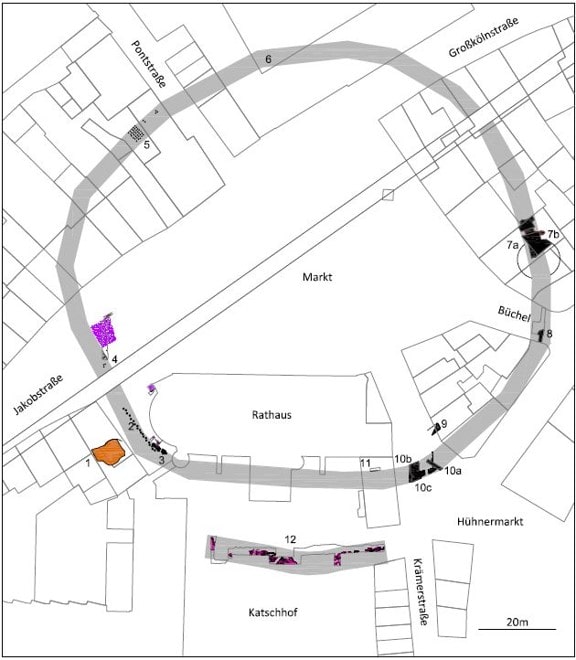
Thus far, the excavation has uncovered a 23-foot segment of wall with a thickness of three feet. The remaining segment’s entire length and greatest width are still unknown.
Finds such as the uncovered defensive wall help to reconstruct the Aachen of the past and better understand how people lived back then. “It is another fragment of our history from Roman times to the Middle Ages. We know that this complex existed until the time of Charlemagne and beyond. The site was only demolished in the 12th century. For around 800 or 900 years, this complex was a defining feature of Aachen and, as we now know, the shape of today’s market can be traced back to this Kastum. This is an enormous urban development impact that this complex had.”
Since archaeological excavations cannot, by law, simply be carried out on suspicion, most discoveries are made during construction work. Construction sites are therefore accompanied by archaeologists who ensure that finds are secured and documented. Parts of the defensive wall have been found around the market square (Marktplatz) in the past.
City archaeologist Andreas Schaub classifies it: “For around 140 years, people have suspected a late Roman fort in Aachen, but it was only between 2011 and 2014 that it was possible to turn the assumption into certainty and to locate the complex.” At that time, there was close cooperation between the city archeology and the company ArcheoConsult decoded the findings of the so-called castrum around Market Hill (Marktplatz).
From the Roman defensive wall to Charlemagne’s royal hall after Aachen was destroyed in the course of Frankish raids around 275/276 AD, the entire market hill was reinforced with a wall with round towers that were five meters wide at the foundation. In front of it was a ditch around six meters wide. The latter was discovered in the Katschhof in 2011. Comparable forts are known from Jülich, Bitburg, and Jünkerath. The late Roman defensive wall continued to be used by Charlemagne. Its King’s Hall (today’s town hall) was built on its southern flank. The fort walls were not demolished until the 12th century. You can still see some of it today. Under a glass panel in the Markt 46 building (Five Guys restaurant), people can view a preserved wall segment with the base of one of the round towers.
Aachen’s history predates the Middle Ages, and it is famous as the capital of Charlemagne’s empire (800-814 A.D.), as well as the city where subsequent German kings and Holy Roman Emperors were crowned until 1531. Before the Roman legions occupied it in the early first century, it was a Celtic settlement with natural sulfur thermal springs that were converted into a bath complex and sanctuary. The Roman military presence ended in the 370s due to pressure from migrating Germanic tribes. Frankish rule was established a century later.
As the construction work progresses, the archaeologists also hope for further discoveries that will continue to complete the Aachen puzzle.
Cover Photo: Stadt Aachen / Stefan Herrmann


